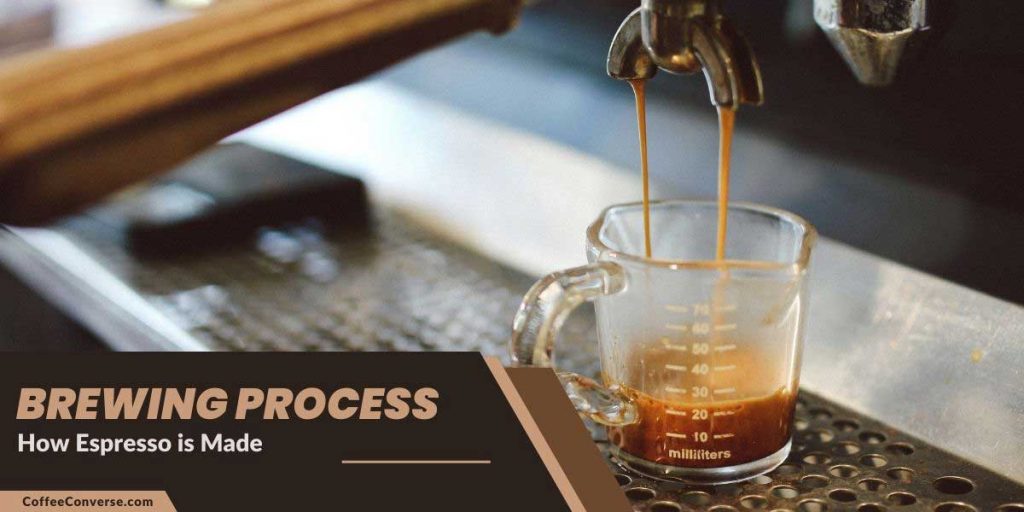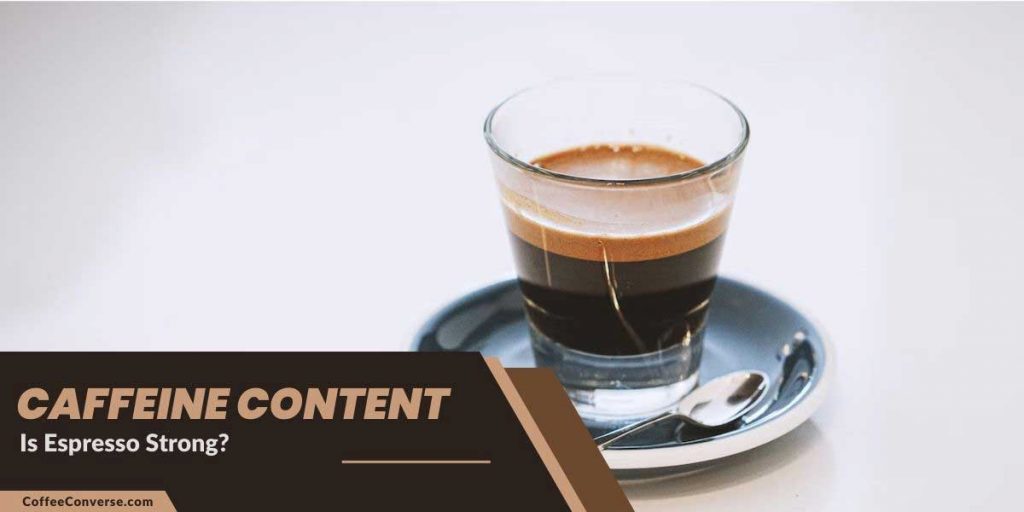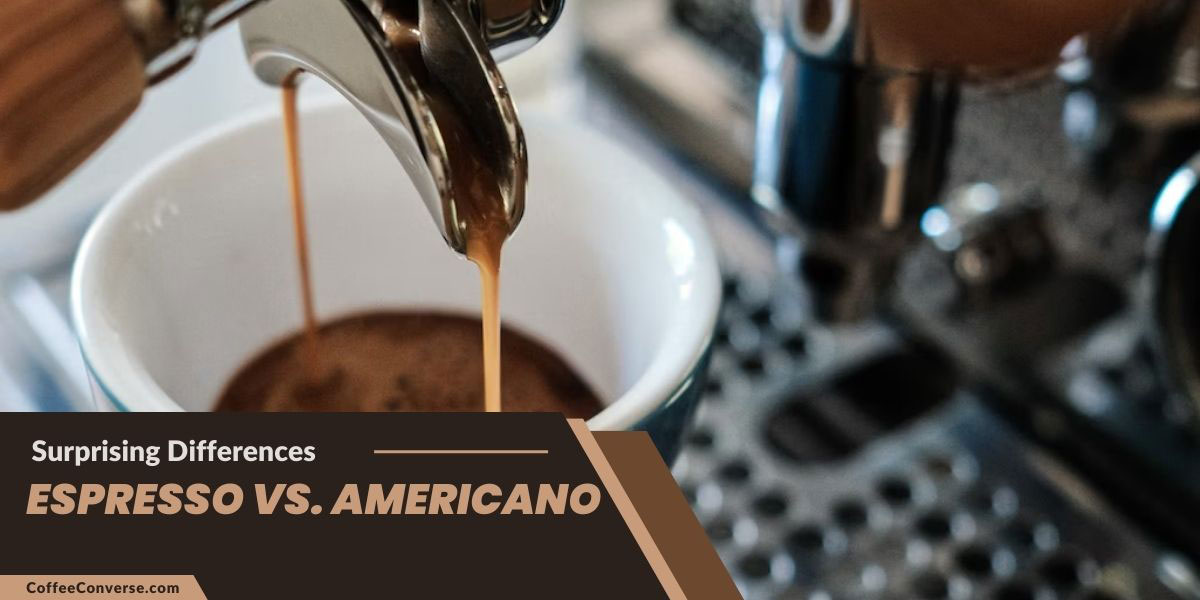When it comes to coffee, espresso is the ultimate connoisseur’s drink. But what is espresso exactly?
We’re here to answer all of your pressing questions about this beverage—from its history, to the different types, and even its benefits and drawbacks. We’ll also be covering taste, aroma, and its ever-growing popularity.
What is Espresso?
At its core, espresso is simply concentrated coffee that has been brewed through hot pressurized water. The result is an intense flavor with a thick crema layer on top. In order to make espresso, specialty machines are used that have superior pressure control capabilities, allowing baristas to create flavorful shots of pure caffeinated bliss in no time!
Whether you prefer it straight up or as the base for your favorite lattes and cappuccinos, it’s hard to deny the popularity of espresso around the world. Its bold taste and robust aroma make it an ideal addition to any morning pick-me-up!
History: Origins of Espresso
The history of the espresso is steeped in controversy and confusion, but we’ll break it down for you here so you can be an expert in no time!
Legend has it that Italian inventor Angelo Moriondo created the first espresso machine back in 1884.
He was granted a patent for his “steam-brewing coffee machine”, but it wasn’t until 1901 when Luigi Bezzera improved upon Moriondo’s invention that the modern-day espresso machine was born. Bezzera created a steam-pressure system with two boilers: one to heat water and the other to pressurize steam through finely-ground coffee beans.
Brewing Process: How Espresso is Made

Making espresso is like a dance, a beautiful blend of timing, pressure, and precision. It’s a simple yet complex process that requires a lot of patience and practice.
The first step is to grind fresh, high-quality coffee beans—The grind size should be fine, almost like sugar, to allow the hot water to extract the full flavor from the coffee
Next, you pack the ground coffee into the portafilter and tamp it down to ensure an even extraction.
Now comes the fun part, inserting the portafilter into the espresso machine and pulling the shot. Timing is everything, you need to get the shot in 25-30 seconds—A good shot should have a rich crema on top and be dark, strong, and not too bitter.
Variations: Types of Espresso Drinks
There are actually many varieties of espresso that all offer unique flavors and strengths., here are those:
- Americano: A shot of espresso mixed with hot water. The perfect drink for those who want a classic coffee flavor with a little more kick.
- Latte: Espresso mixed with steamed milk and topped with a dollop of foamy milk. A popular drink for those who want a smooth and creamy coffee experience.
- Cappuccino: A combination of espresso, steamed milk, and foamy milk, with a 1:1:1 ratio of each. A perfect balance of bitter and sweet, this drink is a classic choice.
- Macchiato: A shot of espresso with a small amount of foamy milk. The ultimate choice for those who want a strong and intense coffee experience.
- Mocha: A latte with the addition of chocolate syrup. This a sweet treat for those who have a sweet tooth!
Flavor Profile: Taste of Espresso
Ah, the flavor profile of espresso. It’s one of those things that makes coffee lovers everywhere feel a little bit giddy. This complex and unique beverage offers up a symphony of flavors that can make your taste buds do a happy dance.
But what exactly is it about espresso that brings such joy? Let’s take a look at the flavor profile and see what makes it so special.
At its core, espresso is made with finely ground coffee beans – typically dark roast – and hot water brewed using an espresso machine or moka pot. The resulting liquid is strong and concentrated, with intense aromas that tantalize your nose before you even take the first sip.
The flavors in espresso range from sweet to bitter to acidic depending on your blend; notes of chocolate, nuts, molasses, and caramel are all common possibilities in this delightful drink.
Caffeine Content: Is Espresso Strong?

Is espresso strong? Too strong? Are we drinking too much of it and risking our health?
The truth is, the caffeine content in espresso depends on a few factors, like the roast type and bean origin. For instance, light roasts usually have a lower caffeine content than dark roasts. And if you’re looking for an extra boost of energy, try an espresso from beans grown in South America—they tend to be higher in caffeine than their Asian counterparts.
So if you’re wondering whether or not espresso is strong enough for your tastes, the answer depends on your preferences and desired level of alertness! Just remember that moderation is key when consuming this energizing beverage.
Brewing Tips: Common Mistakes to Avoid
Making espresso should be an enjoyable experience, so don’t let common missteps turn it into a disaster. Whether you’re using a manual or automatic machine, these tips will get your morning started off right.
- Over-tamping: A light tamp will make for a weak shot, but over-tamping can make it bitter. Avoid the mistake by tamping gently, with just enough pressure to make the grounds compact.
- Using poor quality beans: Quality beans make for quality espresso. Look for high-quality, freshly roasted beans. A funny quote on this point could be “Good espresso starts with good beans, it’s like dating, first impressions matter.”
- Improper grinding: Espresso requires a fine grind, like table salt. If it’s too coarse, it will extract too quickly and taste watery. If it’s too fine, it will be over-extracted and taste bitter.
- Using the wrong grind size: Espresso needs a fine grind size, but not too fine. You want to achieve the perfect balance between extraction and flavor. As the legendary coffee expert, Alfred Peet once said, “Coffee is a lot like people. In order to be good company, it has to be fresh and awake.” Make sure your grind size is spot on to bring out the best in your coffee.
- Scalding milk: Scalded milk has a burnt taste, which can ruin your espresso shot. Heat your milk until it’s warm, but not hot.
- Neglecting cleanliness: Keeping your machine and portafilter clean is key to great espresso. Clean your equipment after every use to avoid clogs and buildup.
- Skipping preheating: Preheating your cup and machine ensures that your espresso shot is hot and fresh. Don’t forget to preheat for the best taste.
- Not paying attention to the extraction time: An extraction time of 25 seconds is ideal. If it takes too long, your shot will be over-extracted and bitter. If it’s too short, your shot will be under-extracted and weak. Timing is everything, so pay attention!
- Ignoring the water temperature: Espresso needs to be brewed at the right temperature, usually around 200°F. Too hot or too cold water will result in a poor shot.
- Not using fresh water: Espresso should be made with fresh, filtered water. Old or stagnant water can affect the taste and quality of your shot.
- Using old milk: Milk should be used within a day or two of opening. Old milk can result in sour or rancid espresso shots.
- Not calibrating the machine: Regularly calibrating your espresso machine ensures that it’s working optimally and producing consistent shots.
- Not steaming the milk properly: Steaming the milk correctly is essential to make a good cappuccino or latte. Pay attention to the temperature, texture, and volume of the milk.
- Not experimenting: Espresso is an art form, and there’s always room for experimentation. Don’t be afraid to try new beans, techniques, and recipes. Remember, “A good espresso is not about following the rules, it’s about breaking them in the right way.”
Pros and Cons of Drinking Espresso
Pros
- Energy Boost: Espresso contains high levels of caffeine, which can give you a quick and sustained energy boost. As the saying goes, “Espresso because adulting is hard.”
- Mental Clarity: Caffeine is known to increase alertness and mental clarity, making espresso a great drink for early mornings or long work days.
- Increased Alertness: The caffeine in espresso helps to increase focus and alertness. Whether you’re studying for an exam, working on a project, or just need to stay awake, espresso can help.
- Variety of Options: Espresso can be enjoyed in a number of different ways, such as straight, in lattes, cappuccinos, and more. The options are endless!
- Cultural Significance: Espresso is a staple of Italian culture and has been enjoyed for centuries. It’s a rich and enjoyable part of the coffee-drinking experience. “Espresso, a sip of tradition in every cup.”
- Socialization: Drinking espresso at a cafe or with friends can be a fun and social experience. It’s a great opportunity to
– catch up,
– relax
– and enjoy a good cup of coffee.
Cons
- Caffeine overload: Espresso is high in caffeine, which can lead to jitters, anxiety, and insomnia.
- Addiction: Regular consumption of espresso can lead to caffeine addiction, making it difficult to quit.
- Stained teeth: Espresso is a dark, potent drink that can stain your teeth over time.
- Cost: Espresso can be expensive, especially if you buy it from a cafe regularly.
- Insomnia: Consuming espresso late in the day can affect sleep patterns and cause insomnia.
- Stomach issues: Caffeine in espresso can cause acid reflux, indigestion, and stomach discomfort in some people.
FAQ
What’s the deal with Espresso shots?
Espresso shots are the standard serving size for Espresso. They’re usually served in a small shot glass and contain about 1 to 2 ounces of coffee. The reason for the small serving size is that Espresso is so strong and concentrated, a little bit goes a long way!
What are the key components of a good Espresso?
A good Espresso is all about balance. The right combination of coffee beans, grind size, water temperature, and pressure are all key components to making a delicious Espresso. The ideal Espresso should have a rich, bold flavor profile with a creamy crema on top.
What’s the difference between an Espresso and a Lungo?
An Espresso and a Lungo are similar in that they both start with the same espresso shot. The difference comes in the amount of water that’s added to the shot.
A Lungo is made by adding more hot water to the shot, resulting in a longer and milder tasting coffee. Espresso, on the other hand, is a strong and concentrated shot.
What’s the deal with Espresso Tamping?
Tamping is a critical step in the Espresso-making process. It involves packing the ground coffee into the metal basket in a uniform and tight manner. This helps to ensure that the water is distributed evenly as it passes through the coffee grounds, resulting in a balanced and delicious Espresso.
What’s the ideal grind size for Espresso
The ideal grind size for Espresso is a fine grind, similar to that of table salt. This is because the grind size directly affects the extraction time, and a fine grind will result in a faster extraction time.
A good rule of thumb is to make sure the grind size is consistent and that it feels like flour when you run it through your fingers.
How long should an Espresso shot take to make?
An Espresso shot should take about 20-30 seconds to extract. This is the ideal extraction time as it allows for the right balance of flavor and crema to be extracted from the coffee grounds.
Can you use pre-ground coffee for Espresso?
While it’s possible to use pre-ground coffee for Espresso, it’s not recommended. Pre-ground coffee can quickly lose its flavor and aroma, affecting the taste of your Espresso. It’s best to grind your coffee beans right before making your Espresso for the freshest, tastiest shot possible.
Can Espresso be used in baking?
Yes! Espresso can be used in baking to add a rich, coffee flavor to baked goods. Try adding a shot of Espresso to your favorite chocolate cake or brownie recipe for an extra delicious treat.
Can Espresso be made with decaf coffee beans?
Absolutely! Decaf coffee beans can be used to make Espresso, allowing you to enjoy the rich, bold flavor of Espresso without the caffeine.
What’s the best way to enjoy an Espresso shot?
The best way to enjoy an Espresso shot is on its own, sipped slowly to savor the bold, rich flavor. You can adding a drop of sugar or a dash of cinnamon for sweeter taste.
Can Espresso be made with flavored coffee beans?
Yes! Flavored coffee beans can be used to make Espresso, adding an extra delicious twist to your favorite drink. Try flavored beans like hazelnut, vanilla, or caramel for a special treat.
Can you make Espresso with a French press?
While a French press can be used to make coffee, it’s not the ideal method for making Espresso. Espresso requires high pressure and a fine grind, which a French press is not designed to handle.
What’s the best way to froth milk for Espresso drinks?
The best way to froth milk for Espresso drinks is to use a steam wand on an Espresso machine. This allows you to heat and froth the milk to the perfect temperature and texture for a delicious, creamy foam.




